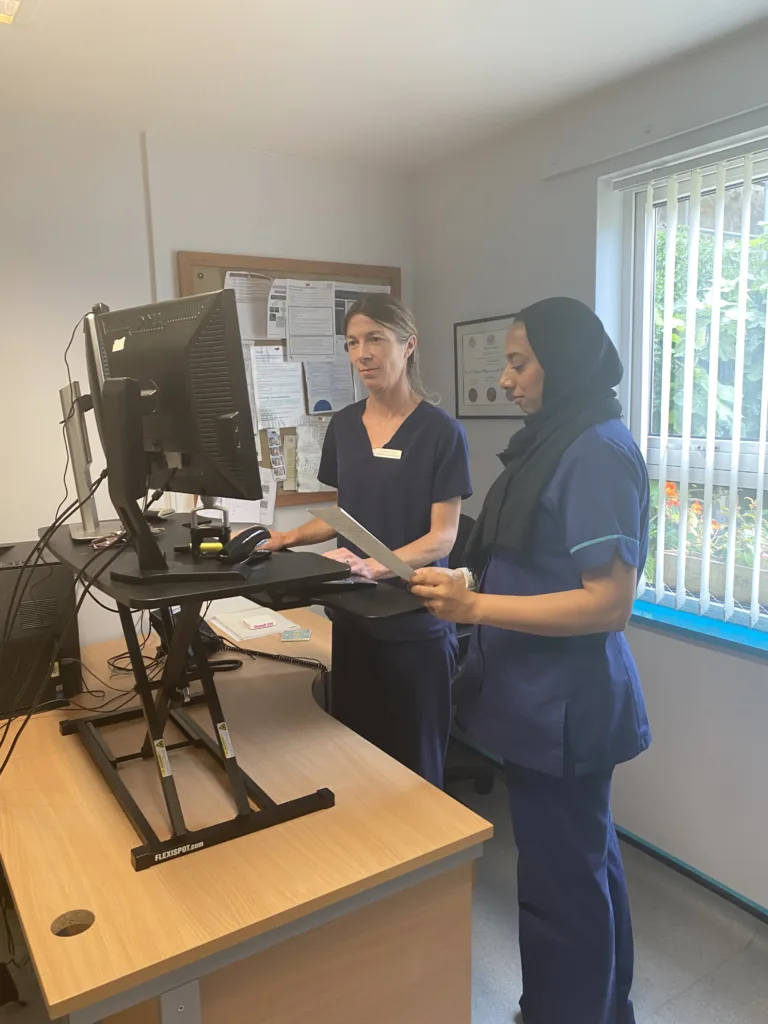Revolutionary ‘spoke site’ model sees first UK patient enrolled for respiratory trial through primary care partnership
A patient at Dyneley House Surgery in Skipton has become the first patient in the UK to participate in a pioneering asthma study through an innovative GP collaboration model. This landmark achievement represents a significant breakthrough in how clinical research is delivered to communities across Britain.
The study, delivered through the NIHR Bradford and West Yorkshire Commercial Research Delivery Centre (CRDC) at the Bradford Institute for Health Research, demonstrates the transformative potential of bringing world-class clinical trials directly into primary care settings. This approach promises to revolutionise patient access to life-changing treatments and research opportunities.

Breaking Down Barriers to Medical Innovation
What makes this achievement particularly remarkable is the speed and efficiency of recruitment through GP collaboration. Dr Rachel Pring, Partner at Dyneley House Surgery and Research GP, working collaboratively with the CRDC, has spoken of her excitement at this achievement and how this novel approach, using GP services as ‘spoke’ sites has enabled dramatic acceleration of patient recruitment in primary care.
Dr Rachel Pring commented: “A ‘spoke site’ is essentially a satellite research location that works in partnership with a main research hub. By establishing GP practices as spoke sites, we’re bringing clinical trials directly to where patients already receive their care. Traditionally, getting GPs involved in research has been challenging due to time constraints, training requirements, and complex administrative processes. However, what we’ve discovered is that patients have tremendous trust in their GPs – they know us, they trust our recommendations, and they’re more likely to consider participating in research when it’s offered by someone they already have a relationship with.
“This model doesn’t just make recruitment easier; it makes it more accessible and equitable. Patients no longer need to travel to distant hospitals or wait for specialist appointments to hear about potentially life-changing treatments. This collaboration with the CRDC has shown us how primary care can become a powerful gateway for clinical research, and I believe this could fundamentally change how we deliver research opportunities to communities across the country.”
The success has been further enhanced by the collaborative approach taken by Sanofi, the study sponsor, who worked closely with GP practices to streamline the recruitment process whilst respecting the established doctor-patient relationships that are central to primary care.
A Sanofi representative, the sponsor of the trial, sent a special tribute to Rachel to signify this achievement: “Special recognition goes to Dr Rachel Pring at Dyneley House (Spoke site) for identifying this patient. The successful enrollment of this patient is a testament to your expertise and the strong teamwork you’ve demonstrated throughout this process.
This is a significant milestone, and I wanted to take a moment to express my appreciation for your hard work, collaboration, and dedication.
Your commitment to this study is truly commendable, and your contributions are making a real difference, and I look forward to seeing the positive impact of your work as we move forward.”
Transforming Healthcare Access Across Communities
This breakthrough aligns perfectly with the core mission of the NIHR Bradford and West Yorkshire CRDC: to bridge the gap between secondary and primary care by establishing general practices as research ‘spoke’ sites. This innovative approach has the potential to revolutionise clinical trial access and transform how new treatments reach the patients who need them most.
The implications extend far beyond a single study. By embedding research opportunities within routine primary care, this model ensures that clinical trials become more representative of real-world populations and more accessible to communities that have traditionally been underrepresented in medical research.
Instead of patients having to wait for consultant appointments or hospital admissions to learn about relevant trials, they can now discover these opportunities during routine GP visits. This proactive approach means earlier intervention, better outcomes, and more equitable access to medical innovation.

Professor Dinesh Saralaya, Director of NIHR Bradford and West Yorkshire CRDC and Consultant in Respiratory Medicine, said: “This achievement represents a pivotal moment in British clinical research, and it showcases the incredible value of our Research GPs like Dr Rachel Pring. As a Research GP working with the CRDC, Rachel has access to a broad patient population who could benefit from cutting-edge clinical trials, and her expertise in identifying suitable participants is invaluable.
“Our Research GPs are uniquely positioned to bridge the gap between groundbreaking medical research and the patients who need it most. They understand both the clinical requirements of trials and the individual needs of their patients, making them perfect advocates for research participation. Dr Pring’s success demonstrates how our CRDC Research GPs can efficiently identify and recruit patients across their wide patient base, bringing trials directly to communities that might otherwise miss these opportunities.
“This model leverages the expertise and patient reach of our Research GPs to transform clinical research delivery. By working through our network of Research GPs, we can access diverse patient populations quickly and effectively, ensuring that more people have the opportunity to benefit from innovative treatments. This is exactly the kind of strategic collaboration that will help us build a stronger, more inclusive research ecosystem for the future.”
